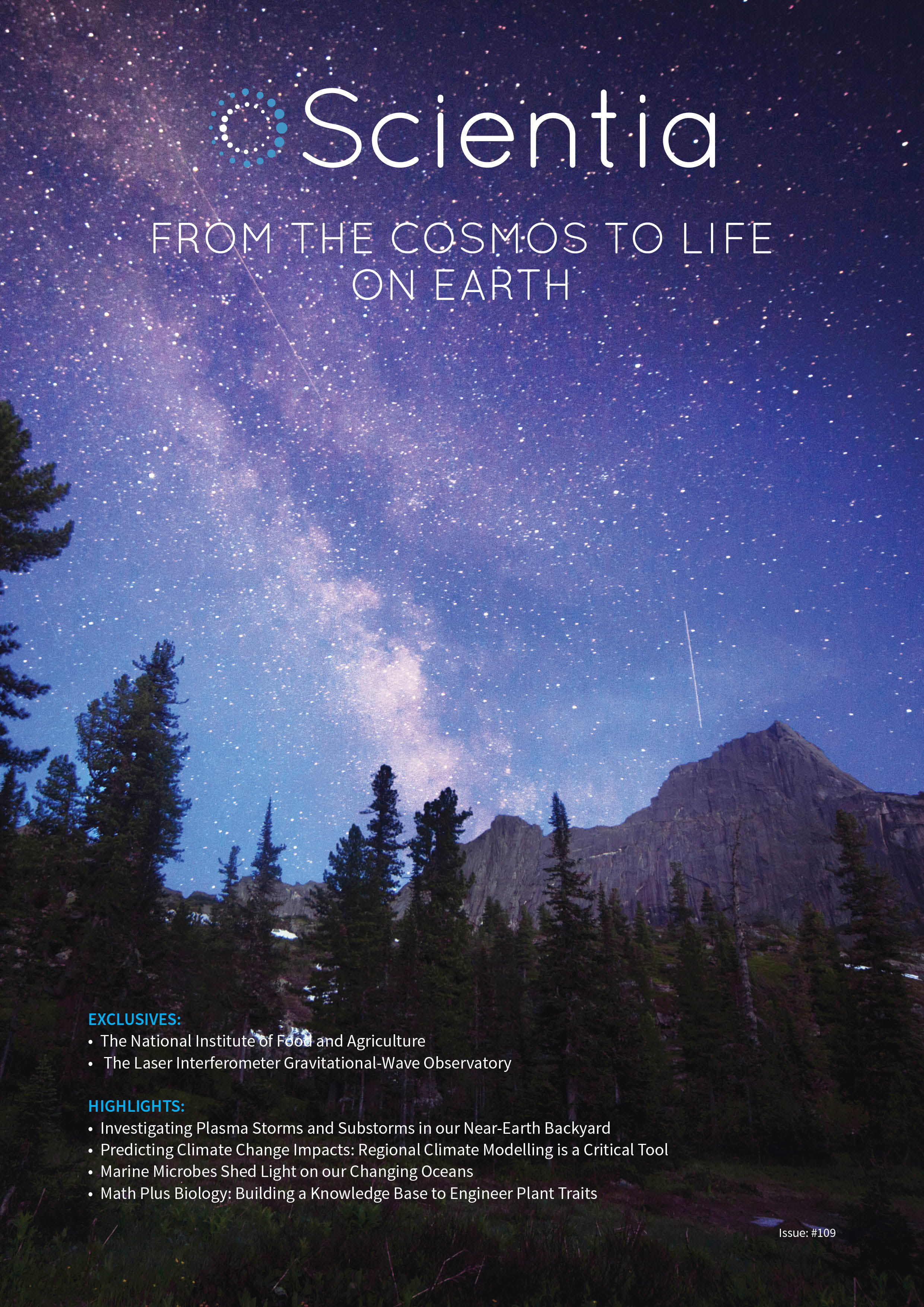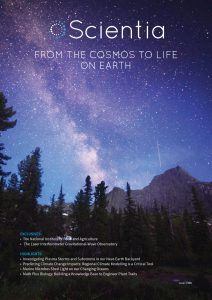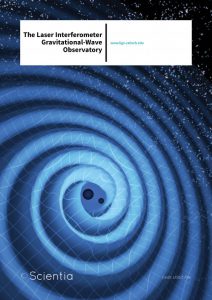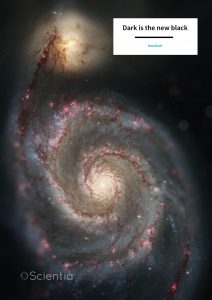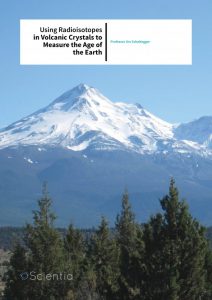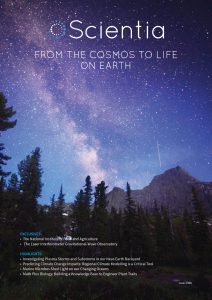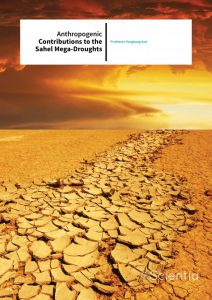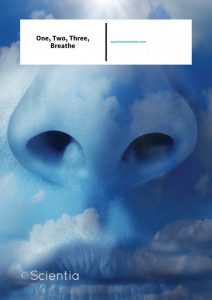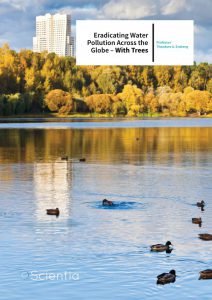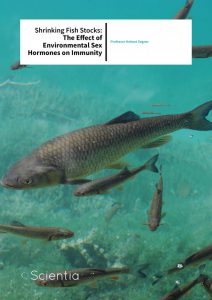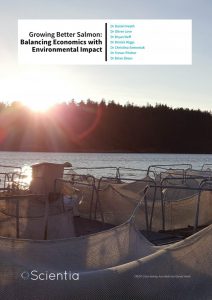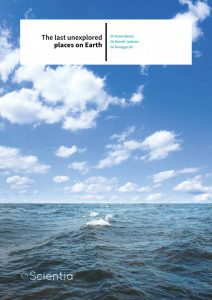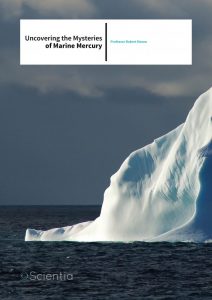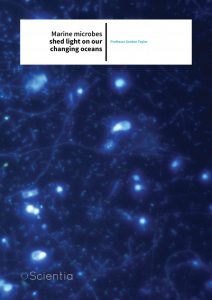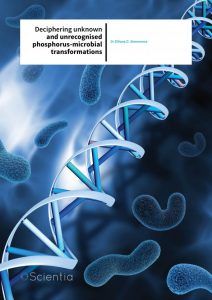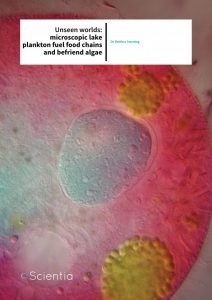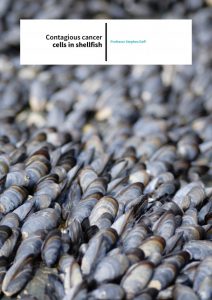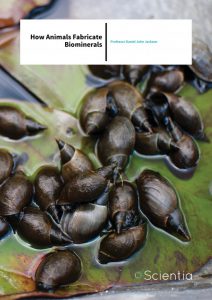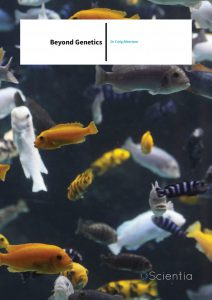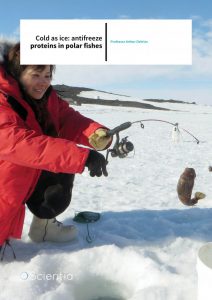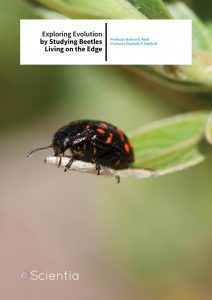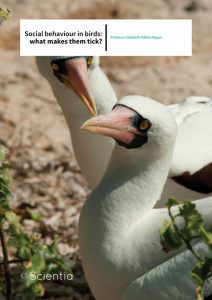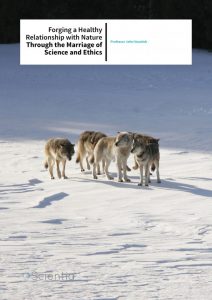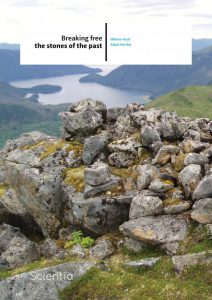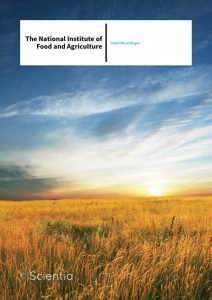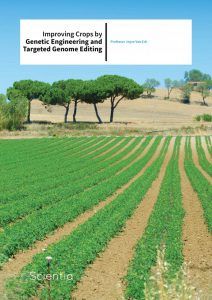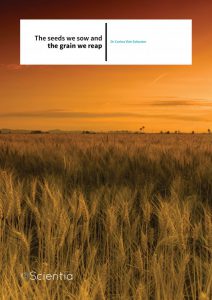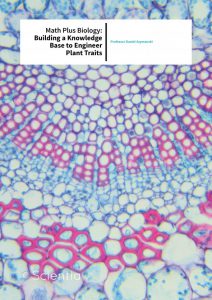Scientia Issue #109
FROM THE COSMOS TO LIFE ON EARTH
It is my absolute pleasure to introduce this fascinating new edition of Scientia, where we explore the latest in earth, environmental and ecological research, with a pinch of cosmology thrown in for good measure.
To open the issue, we start big – with the universe. Here, we have had the pleasure of speaking with Dr Kiwamu Izumi, a scientist working at The Laser Interferometer Gravitational-Wave Observatory (LIGO). Dr Izumi tells us all about LIGO’s ground-breaking gravitational waves discovery – reported earlier this year. Also headed for a breakthrough are the NewDark scientists at the Laboratory for Theoretical and High Energy Physics in Paris, who are busy hunting for dark matter – that elusive substance that comprises 84% of the matter in the universe. From here, we start to bring things closer to home, first by investigating the solar wind, and the spectacular auroral displays it generates upon clashing with our Earth’s magnetosphere.
Next, we reveal the latest in earth and environmental science research. With global temperatures on the rise, and species becoming extinct at a rate of more than 1000 times the ‘background extinction rate’, dedicating our research efforts to our environment is now more important than ever before. Here, we highlight cutting edge climate science research, along with several innovative new ways to battle pollution and save our declining fish populations. From here, we explore our oceans – where we feature four remarkable research projects, ranging from creating 3D images of deep-sea hydrothermal vents to exploring how marine microbes are adapting to our changing seas.
In our next section of the edition, we explore the diversity of life on Earth, by showcasing no less than 10 fascinating projects investigating the ecology and evolution of microbes and animals. Not wanting to ignore the plant kingdom, our final section is dedicated to our leafy cousins. Here we highlight the latest in crop science, and also introduce Dr Sonny Ramaswamy, the director of the US National Institute of Food and Agriculture (NIFA), in an exclusive interview about NIFA’s activities in working towards a future of sustainable agriculture.
EXCLUSIVES:
• The National Institute of Food and Agriculture
• The Laser Interferometer Gravitational-Wave Observatory
HIGHLIGHTS:
• Investigating Plasma Storms and Substorms in our Near-Earth Backyard
• Predicting Climate Change Impacts: Regional Climate Modelling is a Critical Tool
• Marine Microbes Shed Light on our Changing Oceans
• Math Plus Biology: Building a Knowledge Base to Engineer Plant Traits
CONTRIBUTORS FROM:
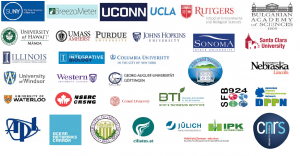
CONTACT
Published in the UK, by Science Diffusion ltd
ISSN 2059-8971 (print)
ISSN 2059-898X (online)
E: info@sciencediffusion.com
W: www.sciencediffusion.com
W: www.scientia.global
tweet us on twitter
follow us on facebook
Meet The Team…
DIRECTOR
Nick Bagnall
nick@sciencediffusion.com
EDITOR-IN-CHIEF
Dr Nelly Berg
nelly@sciencediffusion.com
PUBLICATION MANAGERS
Brett Langenberg brett@sciencediffusion.com
Nick Powers npowers@sciencediffusion.com
DESIGN MANAGER
Mimi Jones
CONTRIBUTING WRITERS
Conn Hastings, PhD
Alice Jensen, MSc
Joseph Pastorek, MD, JD
Alma Ionescu, BSc
Chris Harrison, PhD
Anna Fagre, DVM, MSc
Liv Detrick, MSc
Shayla Regmi, MA
Mary Ziegler, PhD
Share
Scientia Issue #109 Contents
MASSIVE LEAPS FOR COSMOLOGY AND PLANETARY SCIENCE
There has never been a more exciting time for space research.
THE LASER INTERFEROMETER GRAVITATIONAL-WAVE OBSERVATORY (LIGO)
The gravitational waves discovery: an interview with Dr Kiwamu Izumi, scientist at LIGO
INVESTIGATING PLASMA STORMS AND SUBSTORMS IN OUR NEAR-EARTH BACKYARD
Dr Tony Lui
Understanding the mechanisms of space plasma interactions with Earth’s magnetosphere
USING RADIOISOTOPES IN VOLCANIC CRYSTALS TO MEASURE THE AGE OF THE EARTH
Professor Urs Schaltegger
Analysing isotopes of uranium and lead in zircon to date geological events
PREDICTING CLIMATE CHANGE IMPACTS: REGIONAL CLIMATE MODELLING IS A CRITICAL TOOL
Professor René Laprise
Improving our understanding of climate change through the use of Regional Climate Modelling
ANTHROPOGENIC CONTRIBUTIONS TO THE SAHEL MEGA-DROUGHTS
Professor Yongkang Xue
Using multi-model efforts to investigate the Sahel region’s 30-year long drought
ONE, TWO, THREE, BREATHE
BreezoMeter
An innovative new technology to address the problems caused by air pollution
ERADICATING WATER POLLUTION ACROSS THE GLOBE – WITH TREES
Professor Theodore A. Endreny
Planting trees to make our waterways safe for swimming, fishing and drinking
SHRINKING FISH STOCKS: THE EFFECT OF ENVIRONMENTAL SEX HORMONES ON IMMUNITY
Professor Helmut Segner
Exploring why freshwater fish stocks are dwindling, by studying how oestrogens affect fish immunity
GROWING BETTER SALMON: BALANCING ECONOMICS WITH ENVIRONMENTAL IMPACT
Dr Daniel Heath, Dr Oliver Love, Dr Bryan Neff, Dr Dennis Higgs, Dr Christina Semeniuk, Dr Trevor Pitcher and Dr Brian Dixon
Making Chinook salmon aquaculture more sustainable and environmentally friendly
INVESTIGATING WHAT GOES ON AT THE BOTTOM OF THE DEEP BLUE SEA
Dr James T. Potemra
Monitoring the bottom of the ocean with the ALOHA Cabled Observatory
THE LAST UNEXPLORED PLACES ON EARTH
Dr Karen Bemis, Dr Darrell Jackson and Dr Guangyu Xu
Exploring hydrothermal vents using the Cabled Observatory Vent Imaging Sonar (COVIS)
UNCOVERING THE MYSTERIES OF MARINE MERCURY
Professor Robert Mason
Studying how mercury levels in the oceans are changing due to climate change
MARINE MICROBES SHED LIGHT ON OUR CHANGING OCEANS
Professor Gordon Taylor
Investigating the decline of dissolved oxygen in the ocean due to climate change, and how this affects microbial life
DECIPHERING UNKNOWN AND UNRECOGNISED PHOSPHORUS-MICROBIAL TRANSFORMATIONS
Dr Diliana D. Simeonova
Studying how bacteria use phosphorus to gain energy, survive and proliferate in extreme environments
UNSEEN WORLDS: MICROSCOPIC LAKE PLANKTON FUEL FOOD CHAINS AND BEFRIEND ALGAE
Dr Bettina Sonntag
Exploring the lives of ciliates – unicellular organisms that live in freshwater lakes
CONTAGIOUS CANCER CELLS IN SHELLFISH
Professor Stephen Goff
Investigating how shellfish can develop cancer
HOW ANIMALS FABRICATE BIOMINERALS
Professor Daniel John Jackson
Studying how animals evolved to fabricate hard parts, by investigating molluscs
BEYOND GENETICS
Dr Craig Albertson
Investigating the genetic and environmental factors behind the evolution of the skeleton
COLD AS ICE: ANTIFREEZE PROTEINS IN POLAR FISHES
Professor Arthur DeVries
Studying antifreeze proteins that have evolved in polar fishes, enabling them to survive in polar environments
EXPLORING EVOLUTION BY STUDYING BEETLES LIVING ON THE EDGE
Professor Nathan E. Rank and Professor Elizabeth P. Dahlhoff
Exploring evolutionary responses to climate change by studying the Sierra willow leaf beetle
SOCIAL BEHAVIOUR IN BIRDS: WHAT MAKES THEM TICK?
Professor Elizabeth Adkins-Regan
Investigating physiological mechanisms underlying social and reproductive behaviour in birds
FORGING A HEALTHY RELATIONSHIP WITH NATURE THROUGH THE MARRIAGE OF SCIENCE AND ETHICS
Professor John Vucetich
Studying wolves and moose in Isle Royale and Yellowstone National Parks
BREAKING FREE THE STONES OF THE PAST
Professor William Hunt and Professor Ralph Hartley
Investigating the mysterious cairns in the coastal mountains of Alaska
NATIONAL INSTITUTE OF FOOD AND AGRICULTURE (NIFA)
An exclusive interview with Dr Sonny Ramaswamy, the director of NIFA
IMPROVING CROPS BY GENETIC ENGINEERING AND TARGETED GENOME EDITING
Professor Joyce Van Eck
Improving the ability of tomato and potato crops to resist disease using CRISPR/Cas9
THE SEEDS WE SOW AND THE GRAIN WE REAP
Dr Corina Vlot-Schuster
Studying the natural plant defence system known as Systemic Acquired Resistance, or SAR

